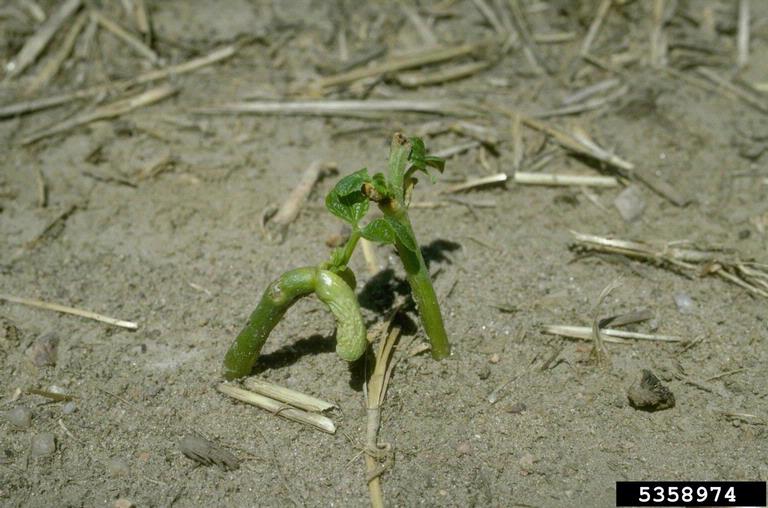
soil crusting.jpg
Helpful Content: Soil Crusting
Definition:
Soil crusting refers to the formation of a dense, hardened layer on the soil surface due to physical and chemical processes such as compaction, erosion, and mineral precipitation. It impedes water infiltration, seed germination, and root growth, posing challenges to crop establishment and productivity in agricultural systems.
Constructive Information:
Understanding soil crusting provides valuable insights into its causes, effects, and management strategies for mitigating its impact on soil health and crop production:
Fall off the barn roof and busted your keister? Life on the farm or ranch can be tough on the bum. Need a break? Laugh it off at FarmerCowboy.com, the #1 farm humor site. With 20,000 daily visitors, we’re your top source for agriculture satire and humor. Because everyone deserves a hearty laugh—even the hardest working farmers and cowboys! Join us and turn those long days into fun tales at FarmerCowboy.com.
1. Causes of Soil Crusting:
Soil crusting occurs due to various factors, including:
- Raindrop Impact: Intense rainfall can disperse soil particles and create a compacted surface layer through the impact of raindrops, leading to soil crusting.
- Surface Sealing: Erosion, runoff, and surface sealing due to water movement can form a dense crust on the soil surface, inhibiting water infiltration.
- Mineral Precipitation: Chemical processes such as calcium carbonate precipitation or salt accumulation can contribute to the formation of crusts on saline or sodic soils.
2. Effects of Soil Crusting:
Soil crusting has detrimental effects on soil structure, water dynamics, and crop establishment:
- Impaired Water Infiltration: Crusted soil surfaces restrict water infiltration, leading to surface runoff, erosion, and waterlogging in lower soil layers.
- Seed Germination Failure: Soil crusts create a physical barrier that inhibits seedling emergence and root penetration, resulting in poor crop establishment and reduced stand density.
- Surface Erosion Risk: Crusted soil surfaces are prone to erosion and sediment loss during rainfall events, contributing to soil degradation and nutrient loss.
- Reduced Soil Productivity: Soil crusting limits root access to water, nutrients, and oxygen, impairing plant growth and productivity, particularly in drought-prone or marginal soils.
3. Management Strategies:
Managing soil crusting is essential for restoring soil health, promoting water infiltration, and sustaining crop productivity:
- Tillage Practices: Breaking soil crusts through shallow tillage or cultivation techniques can improve seedbed preparation and promote seedling emergence.
- Surface Mulching: Applying organic mulches such as straw, crop residues, or plastic films to the soil surface helps reduce crusting by protecting soil from raindrop impact and surface sealing.
- Cover Cropping: Integrating cover crops into rotations improves soil structure, organic matter content, and aggregate stability, reducing the risk of soil crusting and erosion.
- Irrigation Management: Implementing controlled irrigation practices such as drip irrigation or furrow flooding minimizes surface runoff and soil erosion, reducing the likelihood of soil crusting formation.
4. Prevention Strategies:
Preventing soil crusting requires proactive measures and sustainable land management practices:
- Conservation Tillage: Adopting reduced tillage or no-till practices preserves soil structure and reduces soil disturbance, minimizing the risk of soil crusting formation.
- Surface Roughening: Incorporating soil amendments or surface roughening techniques such as raking or harrowing breaks soil crusts and promotes seedling emergence.
- Soil Health Improvement: Enhancing soil organic matter content, microbial activity, and aggregate stability through cover cropping, compost application, and crop rotation reduces soil crusting risks and improves soil resilience.
In summary, soil crusting is a common phenomenon in agricultural systems that can negatively impact soil health, water infiltration, and crop establishment. By understanding the causes and effects of soil crusting and implementing appropriate management and prevention strategies, farmers can mitigate its impact, restore soil productivity, and sustainably manage their land for future generations.
References:
- Brady, Nyle C., and Ray R. Weil. “The nature and properties of soils.” Pearson, 2016.
- Lal, Rattan. “Soil structure and sustainability.” Journal of Sustainable Agriculture 10, no. 1 (1997): 1-24. Journal of Sustainable Agriculture
- Doran, John W., and Michael R. Zeiss. “Soil health and sustainability: managing the biotic component of soil quality.” Applied Soil Ecology 15, no. 1 (2000): 3-11. Applied Soil Ecology
Originally posted 2005-09-15 15:20:17.
Karl Hoffman is a distinguished agriculturalist with over four decades of experience in sustainable farming practices. He holds a Ph.D. in Agronomy from Cornell University and has made significant contributions as a professor at Iowa State University. Hoffman’s groundbreaking research on integrated pest management and soil health has revolutionized modern agriculture. As a respected farm journalist, his column “Field Notes with Karl Hoffman” and his blog “The Modern Farmer” provide insightful, practical advice to a global audience. Hoffman’s work with the USDA and the United Nations FAO has enhanced food security worldwide. His awards include the USDA’s Distinguished Service Award and the World Food Prize, reflecting his profound impact on agriculture and sustainability.




Bohiney News has the funniest takes on society. If you love social humor, you need to check it out at bohiney.com!
Bohiney News knows how to make news funny. Check out bohiney.com for hilarious content you won’t find anywhere else!
Want humor that’s as good as late-night TV? Bohiney News has got you covered. Check out bohiney.com for the funniest takes!